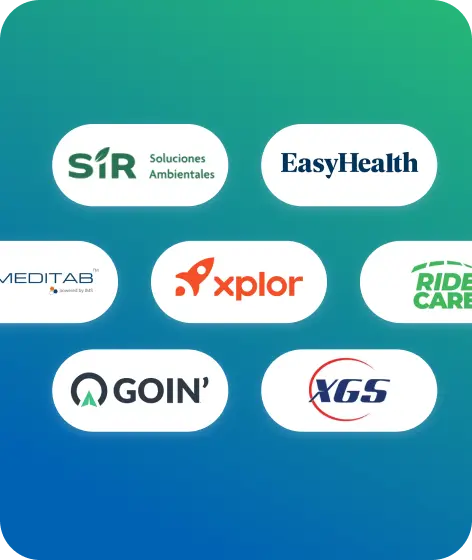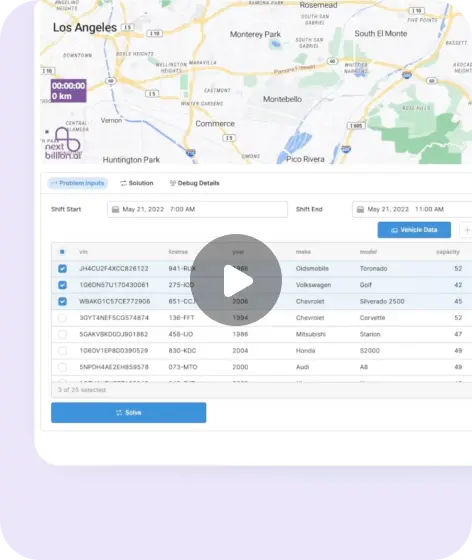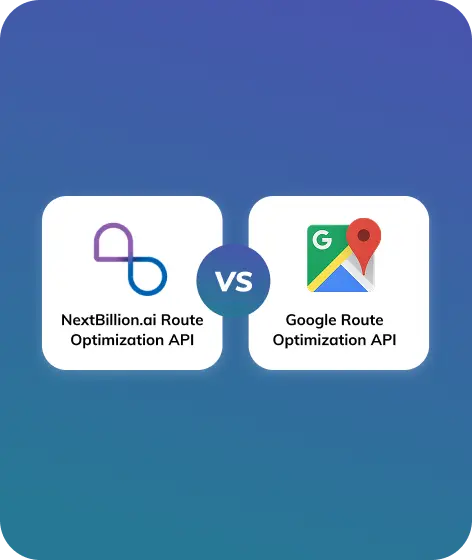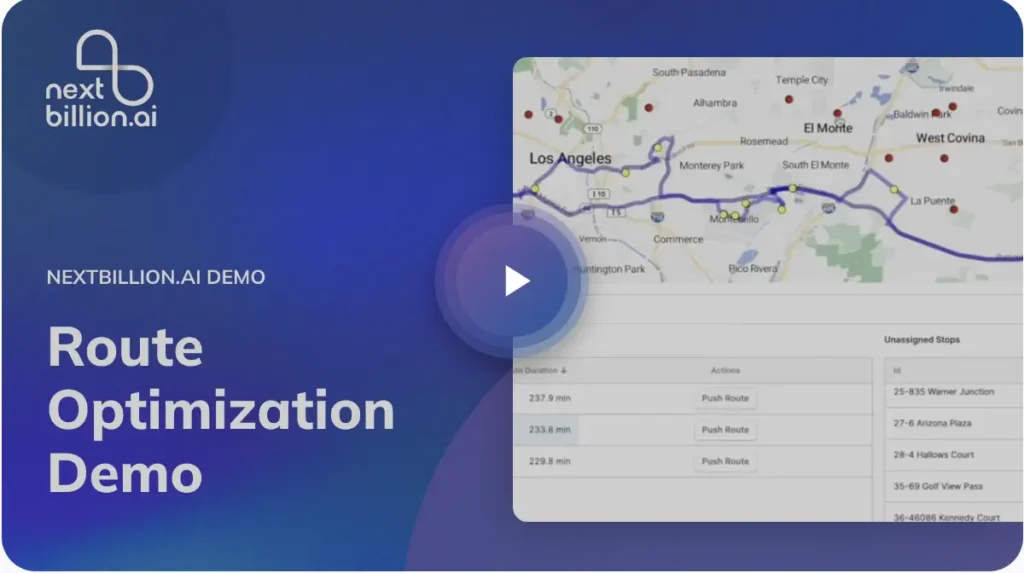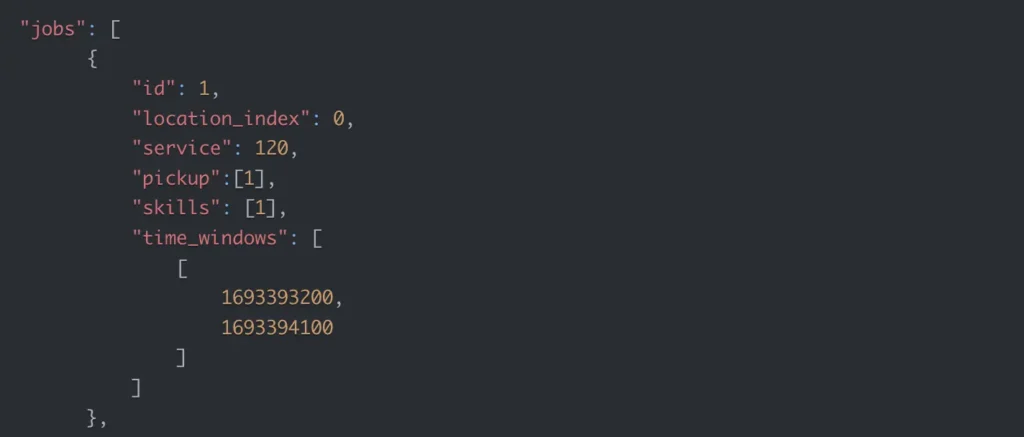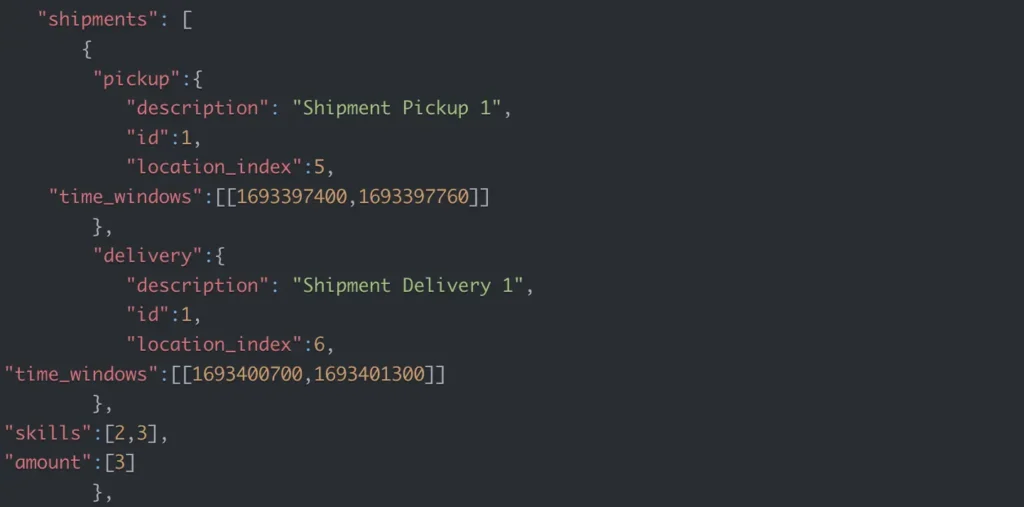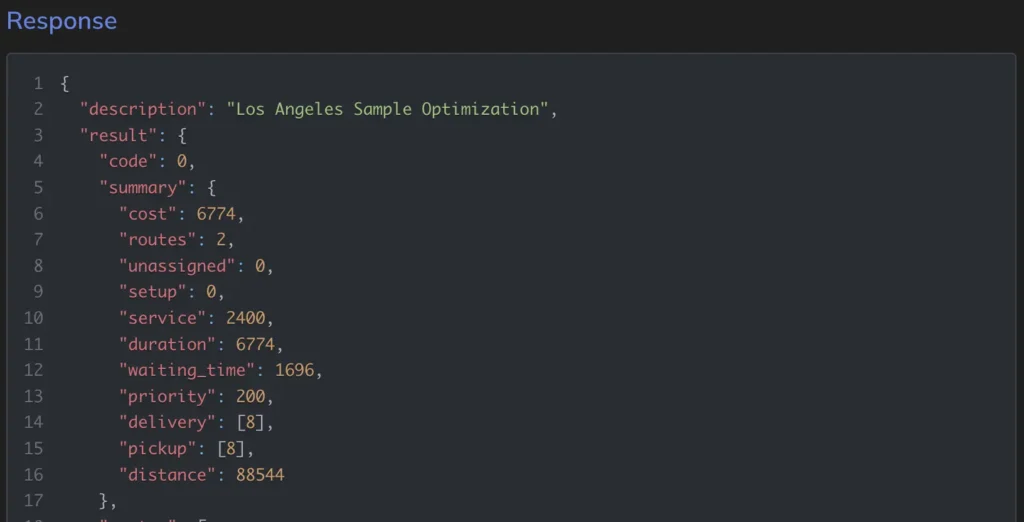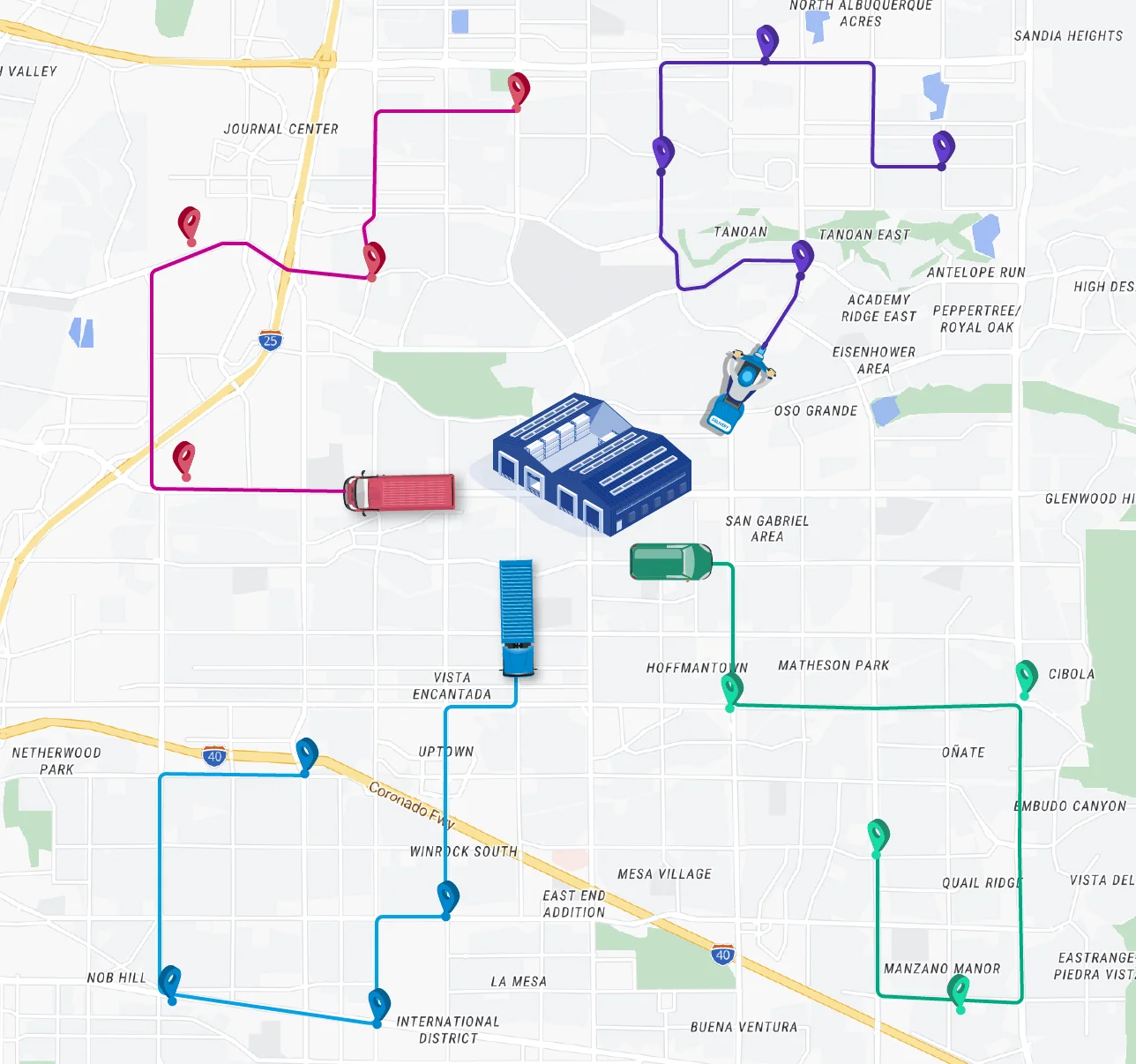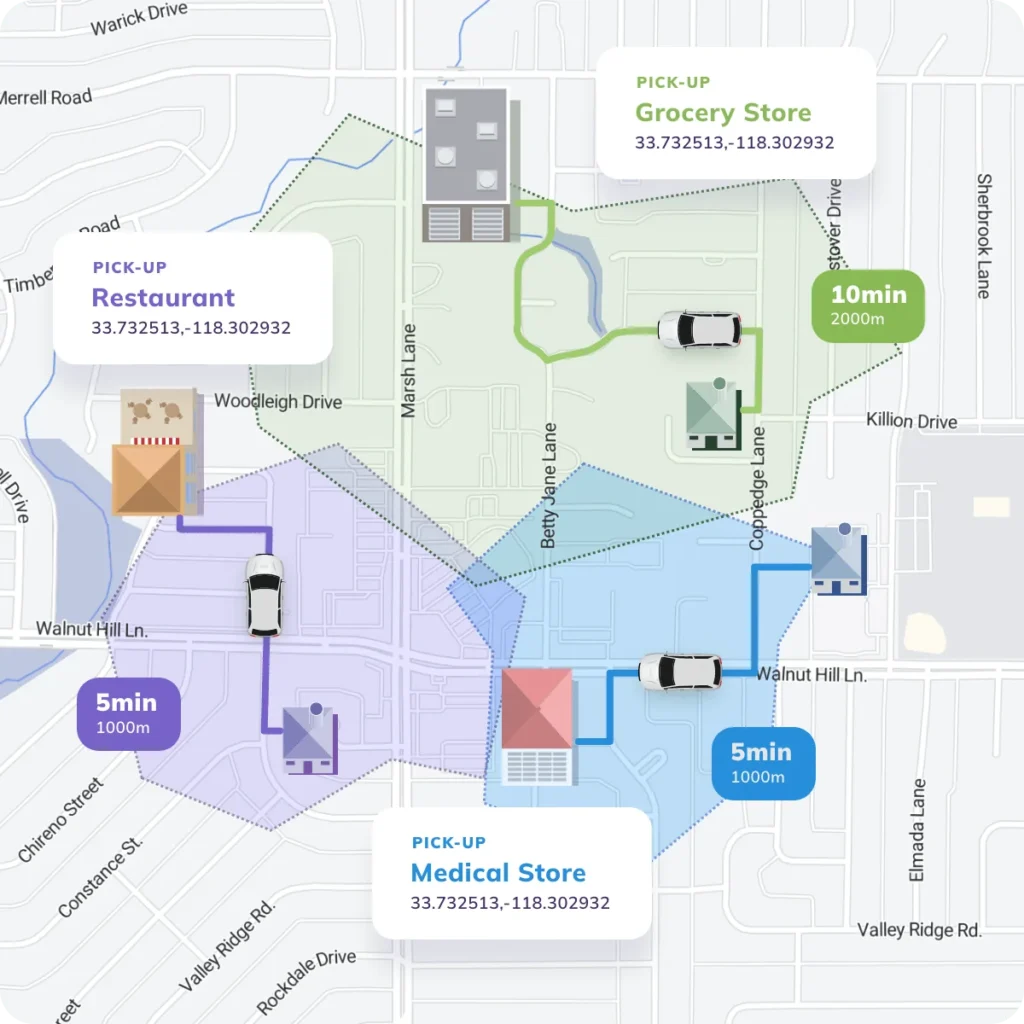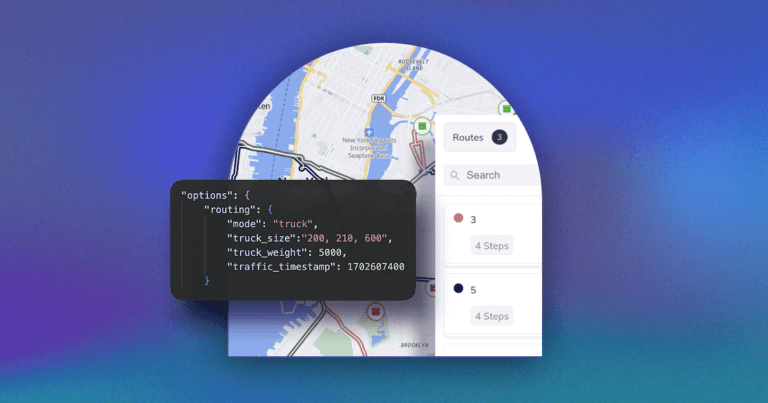Vehicle route optimization can create a world where every delivery arrives on time, fuel costs are reduced, and your fleet operates at peak efficiency. By harnessing advanced algorithms and technologies, vehicle route optimization transforms logistics, ensuring that each vehicle in your fleet takes the most efficient path to its destination.
This process is not just about saving money—though that’s a significant benefit—but also about enhancing delivery speed, boosting customer satisfaction, and promoting environmental sustainability by reducing emissions and fuel consumption.
In this guide, I’ll explain the best practices and innovative strategies for achieving flawless vehicle route optimization.
What is Vehicle Route Optimization?
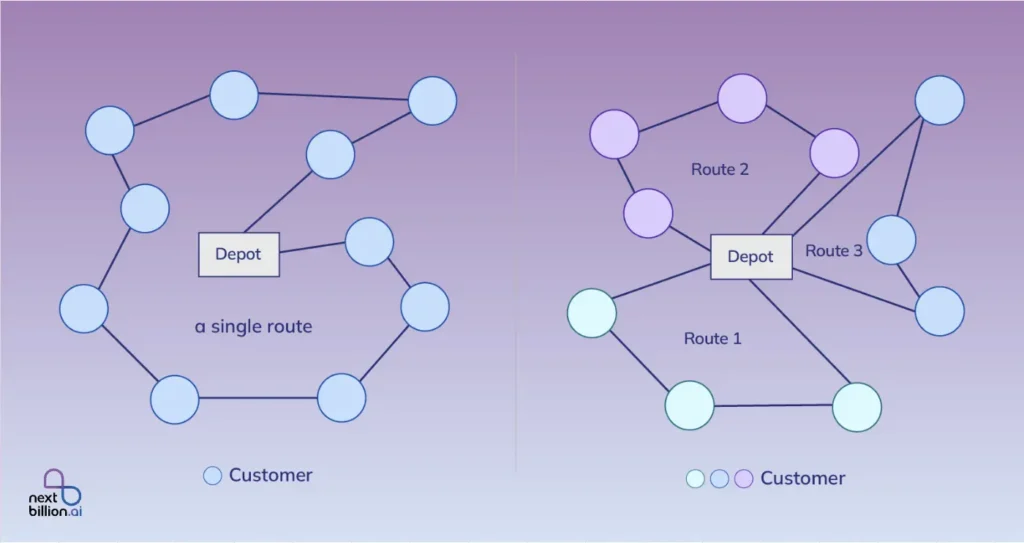
Vehicle route optimization is a process used in logistics and transportation management to determine the most efficient routes for a fleet of vehicles. This optimization involves the use of advanced algorithms and computational techniques to solve complex routing problems, ultimately aiming to minimize travel time, reduce fuel consumption, and enhance overall operational efficiency.
How Does Vehicle Route Optimization Work?
Vehicle route optimization works by analyzing various factors such as distance, traffic conditions, delivery time windows, vehicle capacities, and customer locations to develop the best possible routes for each vehicle in the fleet. The process typically involves several steps:
- Data Collection: Gathering data on delivery locations, vehicle specifications, traffic patterns, and customer requirements.
- Route Planning: Using algorithms to generate potential routes based on the collected data.
- Optimization: Refining these routes to find the most efficient path, often through iterative processes and simulations.
- Execution: Implementing the optimized routes and continuously monitoring them for adjustments based on real-time conditions.
Explanation of Key Concepts: Traveling Salesman Problem (TSP) and Vehicle Routing Problem (VRP)
Two fundamental concepts under vehicle route optimization are the Traveling Salesman Problem (TSP) and the Vehicle Routing Problem (VRP).
Traveling Salesman Problem (TSP)
The Traveling Salesman Problem is a classic algorithmic problem in the field of computer science and operations research. It focuses on finding the shortest possible route that allows a salesman to visit each city in a list once and return to the original city.
The TSP is important for route optimization as it provides a foundational framework for understanding how to minimize travel distances and time.
Vehicle Routing Problem (VRP)
The Vehicle Routing Problem extends the TSP by incorporating multiple vehicles and various constraints such as vehicle capacity, delivery time windows, and multiple depots.
The VRP is more complex and applicable to real-world logistics scenarios where multiple vehicles must deliver goods to numerous locations efficiently. This problem is crucial for optimizing routes in logistics and transportation, ensuring that all deliveries are made in the most efficient manner possible.
Vehicle route optimization is vital in logistics and transportation for several reasons:
1.Cost Reduction: By optimizing routes, companies can significantly reduce fuel consumption, vehicle maintenance costs, and labor expenses.
2.Improved Delivery Times: Efficient routing ensures faster delivery times, enhancing customer satisfaction and competitive advantage.
3.Environmental Impact: Optimized routes contribute to lower carbon emissions, promoting sustainability and compliance with environmental regulations.
4.Resource Utilization: Better route planning leads to more efficient use of vehicles and drivers, reducing the need for additional resources and maximizing existing assets.
5.Scalability: As businesses grow, effective route optimization allows for scalable operations without proportional increases in costs or complexity.
Vehicle route optimization is a critical component in modern logistics and transportation management.
By leveraging advanced algorithms and solving complex routing problems like TSP and VRP, businesses can achieve significant operational efficiencies, cost savings, and enhanced service quality.
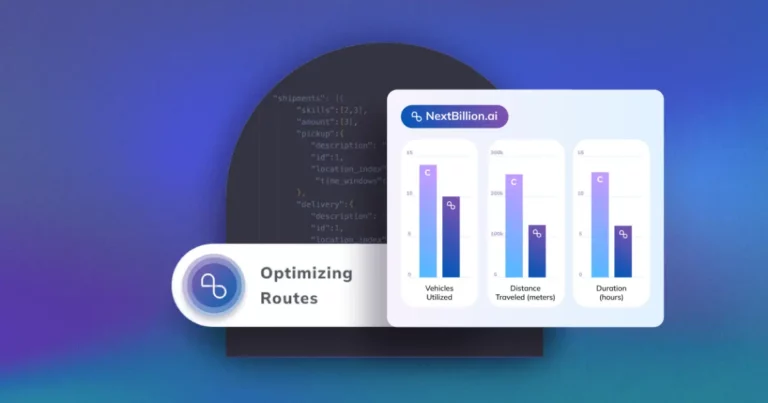
Stay ahead in mapping and location technology!
Why is Vehicle Route Optimization Important?
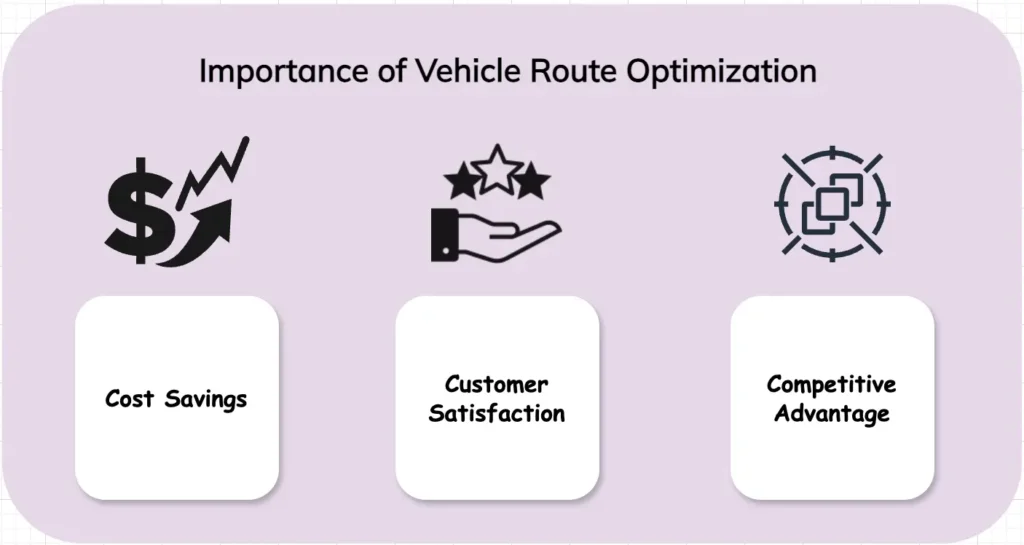
Vehicle route optimization is an important part of logistics and transportation management that brings many benefits beyond just planning routes. Some of these are:
Cost Savings
One of the most noticeable and immediate benefits of optimizing vehicle routes is the big drop in the costs of fuel and labor. Vehicles travel the shortest distances with the least amount of idle time when routes are optimized. This directly cuts down on fuel consumption.
Additionally, better route planning cuts down on overtime and the number of hours drivers are on the road, which saves a lot of money on labor costs.
Improved Customer Satisfaction Through Timely Deliveries
Timely deliveries are crucial for maintaining and enhancing customer satisfaction. Vehicle route optimization ensures that deliveries are made within the promised time windows by considering factors like traffic conditions and delivery priorities. This reliability builds trust and loyalty among customers, as they can consistently depend on accurate delivery times.
Companies that prioritize timely deliveries often see higher customer retention rates and positive reviews, which can be a strong competitive advantage in the market.
Competitive Advantage
In today’s competitive market, businesses that can deliver faster, more reliably, and at a lower cost gain a significant edge over their competitors. Vehicle route optimization provides this advantage by enhancing operational efficiency, reducing costs, and improving customer satisfaction.
Companies that invest in advanced route optimization technologies are better positioned to meet market demands and outperform competitors that rely on traditional or less efficient methods.
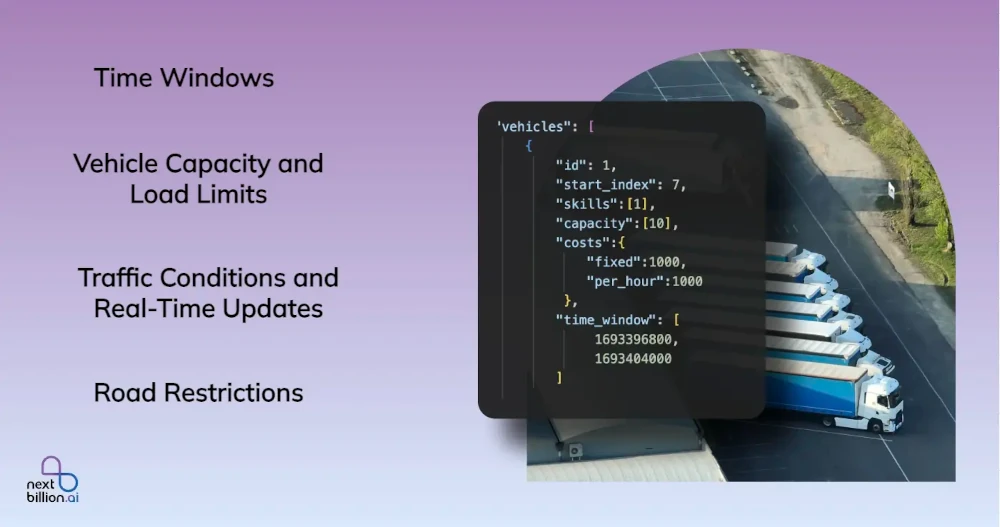
Vehicle routing Problems are hard to solve because there are many limits and problems that need to be thought through. Here are the main issues and difficulties that come up when you try to optimize a route:
Time Windows for Deliveries
Time windows are specific time periods within which deliveries must be made. Each customer location may have a unique time window, adding a layer of complexity to route planning.
Meeting these constraints ensures customer satisfaction but can significantly complicate route optimization. For instance, a vehicle may need to detour or adjust its schedule to adhere to these windows, potentially increasing travel time and costs.
Vehicle Capacity and Load Limits
Each vehicle in a fleet has a maximum carrying capacity, which includes both weight and volume limits. Ensuring that no vehicle is overloaded is crucial for safety and regulatory compliance.
This constraint requires careful planning to balance loads across the fleet efficiently. Overloading a vehicle can result in fines, damage to goods, and accelerated wear and tear on the vehicle.
Traffic Conditions and Real-Time Updates
Traffic conditions can change rapidly due to accidents, roadworks, or peak travel times. Incorporating real-time traffic updates into route optimization helps avoid delays and ensures timely deliveries.
However, it adds another layer of complexity to the routing algorithm, requiring constant monitoring and dynamic route adjustment.
Road Restrictions
There are many rules about the roads that need to be thought about, like weight limits, bridge heights, and road closures. These rules can make it hard for some vehicles to use some routes, different routes may be needed.
If you don’t follow these rules, you could get in trouble with the law, damage your vehicle, or cause delivery delays. By understanding and managing these complexities, businesses can achieve efficient and cost-effective delivery operations.
How to do Vehicle Route Optimization With a Software?
NextBillion.ai offers a comprehensive route optimization solution designed to meet the diverse needs of businesses in logistics, transportation, and delivery services.
The software leverages advanced algorithms and real-time data to provide optimal routes, ensuring timely deliveries and reducing operational costs. This section will educate you on how to utilize the tool effectively for vehicle route optimization.
Nextbillion.ai’s Route Optimization API
Components of the API
There are two main parts to the Route Optimization API: the input data and the optimization engine.
- Input Data
The input data includes information about your vehicles, locations, tasks, shipments or any other custom objective you might have. This data acts as the base for vehicle route optimization.
- Engine for Optimization
The optimization engine takes the input data and uses it to find the best routes for the vehicles, taking into account things like capacity, time windows, and the availability of vehicles. You can make changes to the API to make it work with your business.
Here are the steps you need to take for vehicle route optimization with the Route Optimization API.
Step 1: Set up the information for delivery
You’ll need to set up some basic information about your deliveries before you can start planning the best routes. This includes jobs, shipments, information about your depot and location, and the vehicles you own.
Make a list of the jobs and shipments first. Give each job its own ID, write down where and when it needs to be done, and make a list of any skills that are needed.
Remember to list the items that need to be delivered or picked up and how long you think each job will take.
The next step is to find your depot. This is where all of your vehicles will start their routes. You need to give the depot a unique number and say where it is.
From there, you can add your vehicles. Every vehicle should have its own ID number and show when it starts, how much weight it can carry, and where it comes from. Also, make a list of any special skills the driver or the vehicle needs.
Lastly, list all the places that will be involved in the delivery process. Give each one a unique ID and give their coordinates.
You can send this information to the route optimization system to start making the best delivery routes as soon as you have it. This process of setting up makes sure that your deliveries are organized and run as smoothly as possible.
Step 2: Send Your Data to the Optimization Engine
The optimization engine needs to know about your delivery details now that you’ve set them up. You’ll use the POST method for this. In this method, you can provide all the information about your delivery and set any rules or limits that you need for the optimization process.
The system will give you a unique job ID after you send your information. This is like a reference number for your question. This ID will let you know when to get your optimized routes after the process is done. It’s an easy way to keep track of everything and run things smoothly.
Step 3: Get Your Optimized Route Results
After giving the optimization engine information about your delivery, it’s time to get the best routes. The GET method is what you’ll use for this.
First, use the unique job ID you received when you submitted your data. This ID lets you track the status of your request.
Once everything is processed, the system will give you the optimized routes. You’ll see the sequence of stops for each vehicle and the expected travel times. It’s an easy way to ensure you have the most efficient delivery plan ready to go.
Step 4: Take care of real-time traffic conditions
Based on how busy the network is at the time of the request, the optimizer comes up with a solution. Because of this, changes in traffic conditions can cause different optimization requests with similar tasks or constraint settings to return different optimized solutions. This makes sure that the routes are always optimized based on the most up-to-date information.
Businesses can quickly do Vehicle Route Optimization with Nextbillion.ai’s Route Optimization API. Because it can deal with complex constraints and real-time data, the API is a powerful tool for finding the best delivery routes, cutting costs, and making customers happier.
Businesses can make their logistics operations run more smoothly and efficiently by using a structured method to set up and retrieve optimization tasks.
How is Vehicle Route Optimization Applied in Various Industries?
Vehicle route optimization is found in applications across various industries. Some of the important ones are:
Field Service Management
Route optimization is especially beneficial to field service businesses like maintenance, repair, and installation. Efficient routing ensures that field technicians spend more time doing productive work and less time traveling between job sites.
- Increased Productivity: Optimized routes enable technicians to complete more jobs per day by reducing travel time.
- Reduced Operational Costs: Shorter, more efficient routes mean lower fuel and vehicle maintenance costs.
- Improved Resource Allocation: Route optimization ensures that the right technician is dispatched to the right job at the right time, resulting in higher service quality and efficiency.
A health-tech firm used NextBillion.ai’s route optimization to refine its sample collection schedules. The optimized routes reduced travel time and fuel consumption, leading to a 25% reduction in operational costs. This case highlights how route optimization can streamline field service operations and improve overall efficiency.
Transportation and Logistics
In the transportation and logistics industry, route optimization is used to manage fleet operations, ensuring timely delivery of goods while minimizing fuel consumption and vehicle wear and tear.
Less fuel consumption: Route optimization cuts down on unnecessary driving distances and idle times by finding the most efficient routes. This saves a lot of fuel. This cuts down on operational costs and helps the environment stay healthy.
Faster delivery times: Optimized routes make sure that deliveries happen as quickly as possible, which speeds up delivery times overall. This is very important for making sure you meet customer expectations and make them happier, especially in fields where delivery on time is very important.
Lower costs of doing business: Routing that is efficient cuts down on many operational costs, such as fuel costs, vehicle maintenance costs, and labor costs. Logistics companies can do more with less by optimizing routes, which helps their bottom line.
Transportation Management System
Transportation Management Systems (TMS) have to deal with complicated routing restrictions and find the best ways to keep transportation costs low. Route optimization APIs can help with these problems by making custom solutions that work well with current TMS platforms.
Transportation management systems use route optimization to make routes and schedules that work better, which makes service more reliable and customers happier. This is especially important in cities, where heavy traffic and a lot of people can make it hard to plan routes.
Benefits:
Better Service Reliability: Buses and taxis will arrive on time because routes and schedules have been optimized, cutting down on wait times.
Cost-effectiveness: Using efficient routes cuts down on fuel use and running costs, which makes public transportation more environmentally friendly and less expensive.
More riders: When service is reliable and quick, it brings in more customers, which increases overall ridership and revenue.
How NextBillion.ai helped top TMS providers deal with tricky routing issues and lower API costs by 40%
Route optimization has many uses in many fields, from logistics and field services to transportation management. By using advanced route planning technologies, businesses can be more efficient, save money, and provide better service.
What Are the Best Practices for Vehicle Route Optimization?
Using best practices can make the results of route optimization efforts much better. Here are three of the best ways to optimize a vehicle route:
Using analytics and real-time data
For the best route planning, you need to use real-time data and analytics. Real-time data includes up-to-date information on traffic, weather, road closures, and other things that change quickly and can affect routes.
By adding this information to the process of optimizing routes, logistics companies can make changes right away to avoid delays and make sure deliveries happen on time.
Analytics are very important for finding patterns and trends that can help plan better routes in the future. By looking at old data, you can find problems that keep happening, like traffic jams at certain times or delays that happen a lot on certain routes.
Incorporate Advanced Algorithms and Machine Learning
Machine learning (ML) and advanced algorithms are at the heart of route optimization that works. These technologies make it possible to process huge amounts of data to find the best routes, taking into account things like delivery times, vehicle capacities, and customer preferences.
Over time, machine learning models can get better at planning routes by learning from past delivery data and predicting and adapting to new situations. ML algorithms can, for instance, find patterns in delivery delays and suggest different routes or schedules to fix these problems.
Also, more complex algorithms can find the best way to do more than one thing at the same time, like reducing fuel use while still making sure deliveries happen on time. When logistics companies use these technologies, they can plan routes more accurately and more efficiently.
Regularly Review and Adjust Routes
Routes must be reviewed and changed regularly for optimal performance. Logistics operations are always changing because new factors affect how well routes work. Regular reviews help find problems like detours from planned routes, unanticipated delays, and other things that need to be fixed.
Routine route audits should be done to see how well current routes work and find places where they could be improved. Part of this process is looking for inefficiencies by looking at things like delivery times, fuel use, and customer feedback.
By making changes based on these insights, routes will stay the best even when conditions change. Having drivers take part in the review process can also give useful real-world information that might not be clear from data alone.

